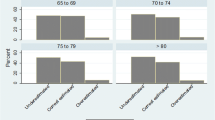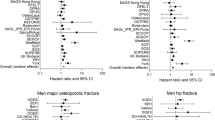Abstract:
In population-based studies of osteoporosis, ascertainment of fractures is typically based on self-report, with subsequent verification by medical records. The aim of this analysis was to assess the validity of self-report of incident nonspine fractures using a postal questionnaire. The degree of overreporting of fracture (false positives) was assessed by comparing self-reports of new fracture from respondents in the multicenter European Prospective Osteoporosis Study with data from other sources including radiographs and medical records. In the analysis, 563 subjects reported nonspine fractures. Verification of the presence of fracture was possible in 510 subjects. Of these, fractures were not confirmed in 11% (false positives). The percentage of false positives was greater in men than in women (15% vs 9%, p=0.04), and less for fractures of the distal forearm and hip than for fractures at other sites. In a separate study, the degree of underreporting (false negatives) was assessed by follow-up of 251 individuals with confirmed fracture ascertained from the records of fracture clinics in three European centers (Lubeck, Oviedo, Warsaw). Questionnaire responses were received from 174 (69%) subjects. Of these, 12 (7%) did not recall sustaining a fracture (false negatives). The percentage of false negatives was lower for hip and distal forearm fractures with only 3 of 90 (3%) such fractures not recalled. Using the combined data from both studies, of those who reported a ‘date’ of fracture on the questionnaire, 91% of subjects were correct to within 1 month of the actual date of the fracture. A postal questionnaire is a relatively simple and accurate method for obtaining information about the occurrence of hip and distal forearm fractures, including their timing. Accuracy of ascertainment of fractures at other sites is less good and where possible self-reported fractures at such sites should be verified from other sources.
Similar content being viewed by others
Author information
Authors and Affiliations
Consortia
Additional information
Received: 22 March 1999 / Accepted: 20 August 1999
Rights and permissions
About this article
Cite this article
Ismail, A., O’Neill, T., Cockerill, W. et al. Validity of Self-Report of Fractures: Results from a Prospective Study in Men and Women Across Europe. Osteoporos Int 11, 248–254 (2000). https://doi.org/10.1007/s001980050288
Issue Date:
DOI: https://doi.org/10.1007/s001980050288




